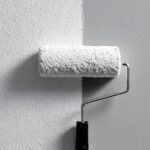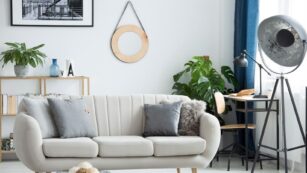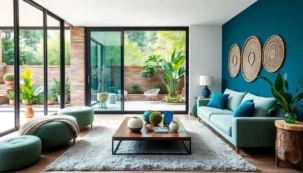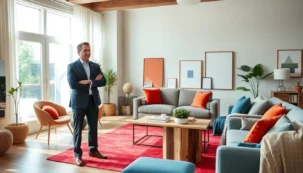

In the world of high-end residential design, every detail carries weight. When planning a custom home, the selection of cabinet hardware deserves close attention. Among these design decisions, choosing luxury cabinet knobs can meaningfully influence both the aesthetic experience and tactile interaction of a space.
Design Integrity Begins with Materials
Cabinet hardware in a custom home should echo the broader architectural intent. Bronze, for instance, is not only visually striking, but it also ages gracefully, developing a rich patina that tells its own story over time. When used thoughtfully, hardware made from enduring materials like bronze contributes to a cohesive narrative across finishes, fixtures, and millwork. Bronze also reflects a sense of permanence and craftsmanship that resonates with the expectations of bespoke luxury homes.
In addition to bronze, designers might consider hardware made from other durable and character-rich materials such as hand-forged iron or brushed nickel. However, it’s the aging quality of bronze that often distinguishes it in the high-end market. Its evolving surface invites touch and interaction, reinforcing the home’s lived-in elegance.
Consider the Role of Scale and Proportion
Cabinet knobs may seem like a small choice, but in finely crafted spaces, scale matters. Oversized or underwhelming hardware can disrupt visual balance. Designers often prototype with full-size samples to ensure that the hardware complements cabinetry dimensions and detailing. Whether for kitchens, dressing rooms, or bespoke built-ins, proportion should always serve the design.
Paying attention to tactile ergonomics is equally important. A knob or pull must feel comfortable and intuitive in hand. Consider how users of all ages and abilities will interact with the hardware in daily life. The scale of the hardware should relate not only to the cabinet face, but to the overall spatial design — room height, sightlines, and even lighting all play a part.
Finish Coordination Across Surfaces
Luxury homes typically feature a curated mix of surfaces: marble countertops, hardwood floors, custom cabinetry. Hardware must work in harmony with these textures and tones. Bronze, with its warmth and variability, can bridge styles ranging from traditional to contemporary. Designers may coordinate hardware finishes with lighting, plumbing fixtures, and even window casings to create subtle visual rhythm.
Selecting the right finish is about more than appearance — it’s about cohesion. For example, a patinated bronze knob might echo the tone of an antique mirror frame in a powder room or tie into the bronze trim of pendant lighting in the kitchen. These quiet connections are what create a truly bespoke feel. Finish consistency, or thoughtful contrast, should be deliberate across the home.
Function, Feel, and Flow
Specifying hardware goes beyond looks. In busy kitchens or master suites, the feel of a cabinet knob matters — how it turns, how it fits the hand, how it resists wear. Designers often prioritize craftsmanship and testing to ensure knobs not only look refined, but perform flawlessly over time. A well-made knob is quiet luxury: it works beautifully without drawing overt attention.
Hardware should contribute to the flow of the home. For instance, a continuous line of matching knobs along a galley kitchen keeps the visual language simple and ordered. In contrast, mixed hardware styles in adjacent zones can signify different uses — perhaps a sleek pull for pantry access and a more ornamental knob for display cabinetry. The sensory experience of touch also becomes part of the spatial journey.
Supporting the Client Vision
Ultimately, specifying cabinet hardware is about supporting the client’s broader design vision. For homeowners building a custom residence, luxury is personal. Some may seek Old World charm, others minimalist precision. Cabinet knobs, subtly but powerfully, help define that mood. Guiding clients through finishes, collections, and tactile options allows the hardware to become part of the home’s identity.
Designers often present curated mood boards or physical samples to help clients envision the final space. This process not only educates but inspires. Informed choices lead to more satisfaction over time. A homeowner who understands how their selected hardware will age, wear, and respond to daily use will appreciate it more deeply.
Installation and Long-Term Maintenance
Another key consideration is how hardware will be installed and maintained. Even high-end hardware must be properly fitted to function as intended. Aligning knobs with millwork patterns, ensuring level placement, and using high-quality fasteners are small steps that protect the design investment. In some cases, matching the screw finish to the knob is a detail worth pursuing.

Long-term care is also part of the discussion. Bronze hardware, for instance, may require occasional cleaning to maintain its desired patina. Some homeowners prefer a living finish that evolves naturally, while others want a sealed, stable appearance. Providing guidance on maintenance helps clients make confident choices and prevents future dissatisfaction.
Small Details, Lasting Impact
In custom home design, it’s the accumulation of intentional choices that creates an elevated experience. Cabinet knobs — when selected with care — reinforce quality, support design coherence, and deliver satisfaction over the long term. They may be small elements, but their presence is felt daily. For those specifying details in luxury homes, that presence should speak of thoughtfulness and enduring beauty.
The selection of cabinet hardware is more than a finishing touch — it is a design gesture that honors the integrity of the space. With attention to material, proportion, finish, and feel, these small components offer daily interactions with beauty and quality. That’s the essence of luxury.











